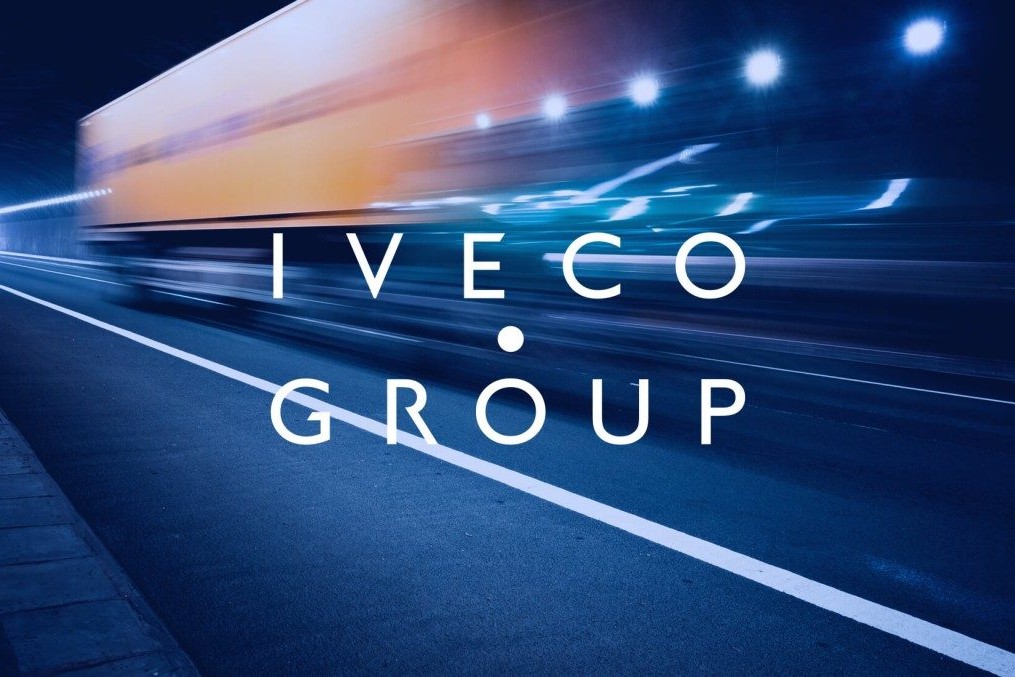Space-age looks for spacious van
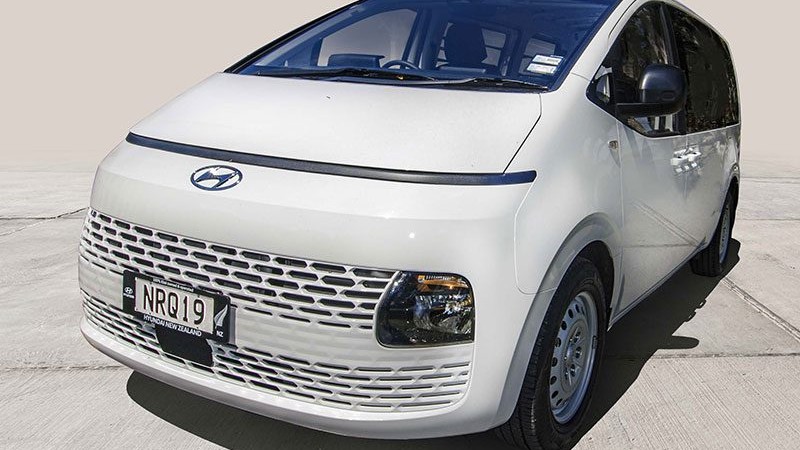
The Staria’s sleek looks, generous spec and big interior attracts attention.
Advertised with the tagline ‘Space Craft’ and boasting sleek and futuristic lines, it’s no wonder Hyundai’s Staria often convinces onlookers its drivetrain is so advanced that it’s at least a hybrid, if not fully electric.
Sadly, the soundtrack gives away that it’s a diesel, and the steel wheels fitted to this Load version are not as smart as the alloys fitted to the much-hyped top-spec, passenger-focused Limited. The headlights aren’t LED, the fancy LED strip indicators give way to a black strip and lower-mounted everyday versions, and the fancy taillights are swapped for standard ones.
That said, the reduced trickery doesn’t detract much from this vehicle’s distinctive look, which drew the sort of admiring glances not usually associated with a white delivery van.
And unless you’re fixed on using a power socket to fuel up, you’re unlikely to be disappointed because it feels every bit as modern, practical and comfy as you’d expect from any newly launched vehicle.
Staria is the replacement for the outgoing iLoad, with more cargo space advertised and, thanks to a platform shared with the Santa Fe SUV, almost car-like ride and handling.
All Staria versions are powered by a 2.2-litre turbodiesel with plenty of pull from low revs and smooth power delivery allied to decent fuel economy, further assisted by the choice of eco, normal or power modes. Front-wheel drive means there are better towing choices than this, but it’ll still pull 2500kg, a full 1000kg more than the cheaper RWD Toyota Hiace.
This time, our test route involved a fair bit of highway driving, from Whangarei to Rawene for carpet delivery via Russell, and some narrow-road and supermarket manoeuvring. All-round visibility proved excellent thanks to the windows, the good mirrors and, of course, the reversing camera. Well short of maximum load, it felt comfortable yet more agile and responsive than any cargo van we’ve sampled so far. Combine that with decent road-holding and better side support from the seats than the usual fare, and we were impressed. Have to sit in the saddle for hours at a time? You’ll be pleased, especially after turning off the slightly trigger-happy lane-following assist.
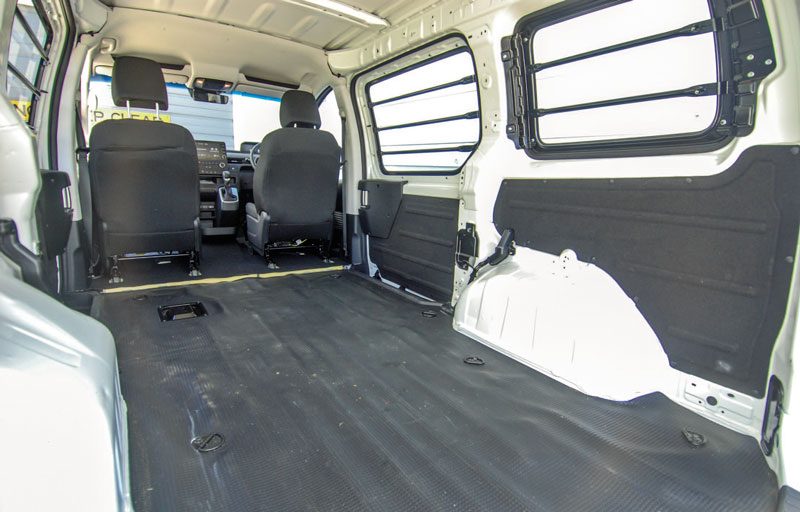
That’s one of a suite of tech aids to keep occupants – and other road users – safe. Staria is the first commercial van to score a full ANCAP five-star crash test rating under its 2020-22 protocols. The van’s safety tech includes forward collision-avoidance assist, to automatically brake when the tech registers vehicles or pedestrians in your path and detects no braking or steering from the driver. There’s also auto dusk-sensing headlights; rear park assist; an excellent reversing camera; lane- follow assist (which keeps the Staria centred in its lane and can twitch the wheel to correct you if needed); a tyre- pressure monitoring system that not only alerts you of problems, but tells you which tyre is affected; lane-keep assist to warn if you cross a white line without indicating; and smart cruise control: set cruise to the open road limit on the highway, and whenever the limit changes, the Staria will reset to the new limit. The goodies even include wireless charging for compatible devices, twin USB inputs and a first-aid kit.
This commercial variant window van gets two seats and front-wheel drive only (the passenger version can be bought in AWD), with an eight-speed auto. It also gets a different dash, in more hardwearing but less fancy materials, and swaps the armrests for walk-through capability.
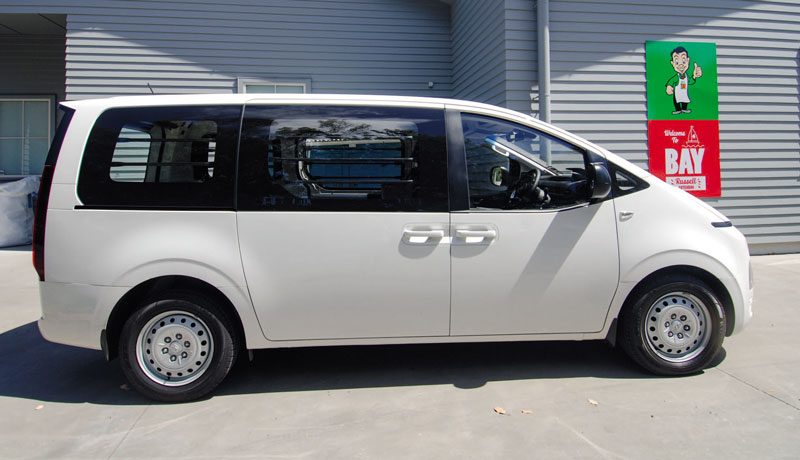
Our test vehicle had a lift back, but a twin-swing rear door is also available. The rear cargo area delivers 4935 litres of space, enough for three Euro pallets – which can be loaded via forklift through the wide side-sliding doors or the back when the optional twin barn doors are fitted.
The cabin is a slight step up to access – there is no driver grab handle to assist shorties – but once in, it’s easy to get comfy, assisted by a six-way manual-adjust driver seat. Big tick for seat comfort. It is equally practical, with compartments above your head – including a length of elastic, allowing easy access but stopping stuff sliding out. There’s a pop-out cupholder for the passenger and one sunk in the dash for the driver.
There are Android Auto and Apple CarPlay, Bluetooth hands-free for the phone system, and steering wheel audio controls. The digital display accesses the distance to empty, as well as average fuel consumption (7.4l/100km for our stint aboard) and outside temperature. Both sun visors get a vanity mirror.
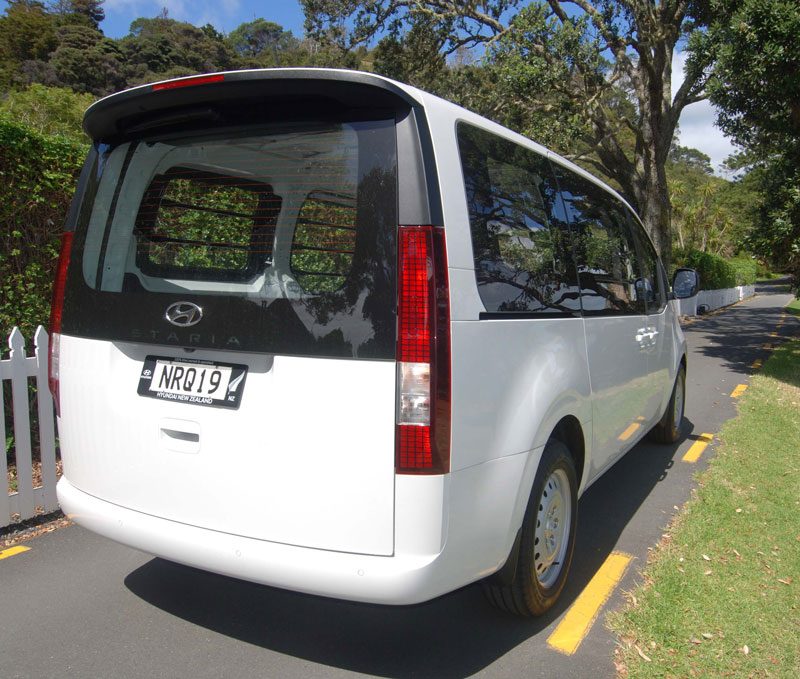
This Staria has ‘only’ an eight-inch infotainment touch screen (the top- spec, multi-seat Limited has a 10.5-incher) plus the digital instrument array, with graphics that change depending on whether you’ve selected normal, eco or sport mode. And yes, selecting sport really does alter the gearing enough to notice a real surge forward – though we largely opted for ‘normal’ to suit the driving we did.
Still disappointed it doesn’t have a more fuel-frugal powerplant? Hyundai says there will be more eco-friendly variants in future.
Meanwhile, the $62,990 Staria Load faces up against main competitors considerably more pedestrian in their looks. Ford’s Transit Custom and VW’s Transporter also cost a bit more. Hiace – unless you want to tow – could be Staria’s nemesis, thanks to a price drop when Toyota NZ launched its new ‘Drive Happy’ pricing scheme.







